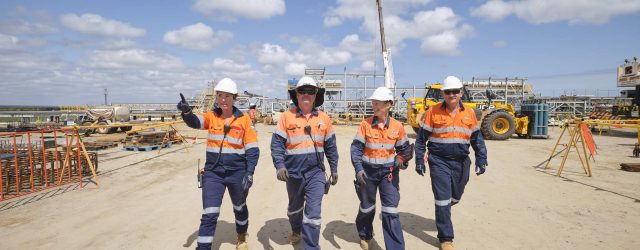Complex systems thinking – rethinking the Australian construction industry
Posted: 12th October 2022
Posted in: Blog

Posted: 12th October 2022
Posted in: Blog
In the 1600s, Sir Isaac Newton, the father of modern physics, argued that all systems could be understood by breaking them down into their parts. When things go wrong, if you look hard enough, you can find all of the individual parts and find out what’s broken. You can point your finger at the cause of failure. Sounds like what we might do to the crane operator who toppled their crane – they’d let the crane be overloaded, and the procedures had, after all, been updated after the last time this happened. There is just no excuse for letting this happen… right?
This linear (or reductionist) way of thinking has been with us for 400 years now – it is the vibe. You can see it in how scientific research is directed towards ever more level of minutiae, it is how our legal system analyses and attributes responsibility, and it is in that latest marketing pitch to you promising the one solution to all your problems.
Well, there is a new kid on the block. And this kid looked at the world around them, shook their head and did the math.
One of the first things studied were earthquakes. We should after all be able to work out what causes earthquakes, when they will happen and how big they will be. The scientists devised a famous experiment called the sand box experiment – a virtual box in which grains of sands would randomly fall until, at some point, a pile of sand would collapse. The theory being, if you do this enough times, you can work out how to predict the next collapse and its size.
They never did. Instead, they ended up proving that there are systems which can’t be reduced to their parts and be predicted in a linear way. These systems are more than the sum of their parts and their interactions generate new properties.
There is even a mathematical pattern that can be found in complex systems. It is called the Power Law. Where there’s a Power Law there is a complex system.
Another approach to understanding if you are in a complex system is asking whether the system is closed and tightly bound (like a watch) or open with lots of interactions between different parts, such as between people, cultures, technology, and the environment (such as the pilot sitting in the cockpit of an airplane getting ready for take-off).
Complex systems are all around us, from the climate to the stock market, to world wars and ant hills… and to mega projects and the Australian construction industry.
What do we know about complex systems? Here’s my quick list:
What is exciting about complex systems thinking right now is that we are still at the beginning of complex system research as it shifts from the theory and math towards its day-to-day practical application.
The early adopters (think airline industry, software industry and industrial process plants) have been leading research into how complex systems work and developing the tools that can help achieve reliable outcomes in them. The construction industry can leapfrog directly into this work.
Just two of the interesting tools that have been developed so far include causal mapping, which is a way to visualise and communicate the interactions in a system, and HRO Theory, which examines strategies that enable high reliable outcomes in a complex system. There are many more, including plenty of analytical and machine learning tools that can be used as well.
So, back to our crane operator who toppled their machine this morning. Their boss had them covering a shift for a colleague (if they wanted future shifts they had quickly learnt to never say no, even though they hadn’t been in that particular crane model for years). Their boss was also desperate to avoid the LDs on that particular contract, they could not afford a day with the crane out of action, and crane operators were in short supply, they were struggling to recruit! The operator was also anxious about finishing on time to make the school band concert, they’d pinkie promised to be make it this time. Last night’s storm had really muddied the site, and everything had been running slow – there was time for one last crane movement and the team were keen to get the last of the materials shifted so the site was clean for the morning inspection. That morning’s toolbox speech focused again on the excellent approach to site tidiness, their zero LTI record and how the number of site safety interaction stats were hitting the KPI.
Complex system thinking challenges us all to look beyond individual failure points, to how all of the parts of the system are interacting. The relationships between people, the systems, and tools they use, organisational constraints and incentives, culture, and multiple external factors.
If the outcomes, we are getting in the Australian construction industry are not the ones we want (like low productivity and innovation, and a woeful safety record) then the answer lies in setting a new trajectory for this system and changing the system until its starts to produce the outcomes we want.